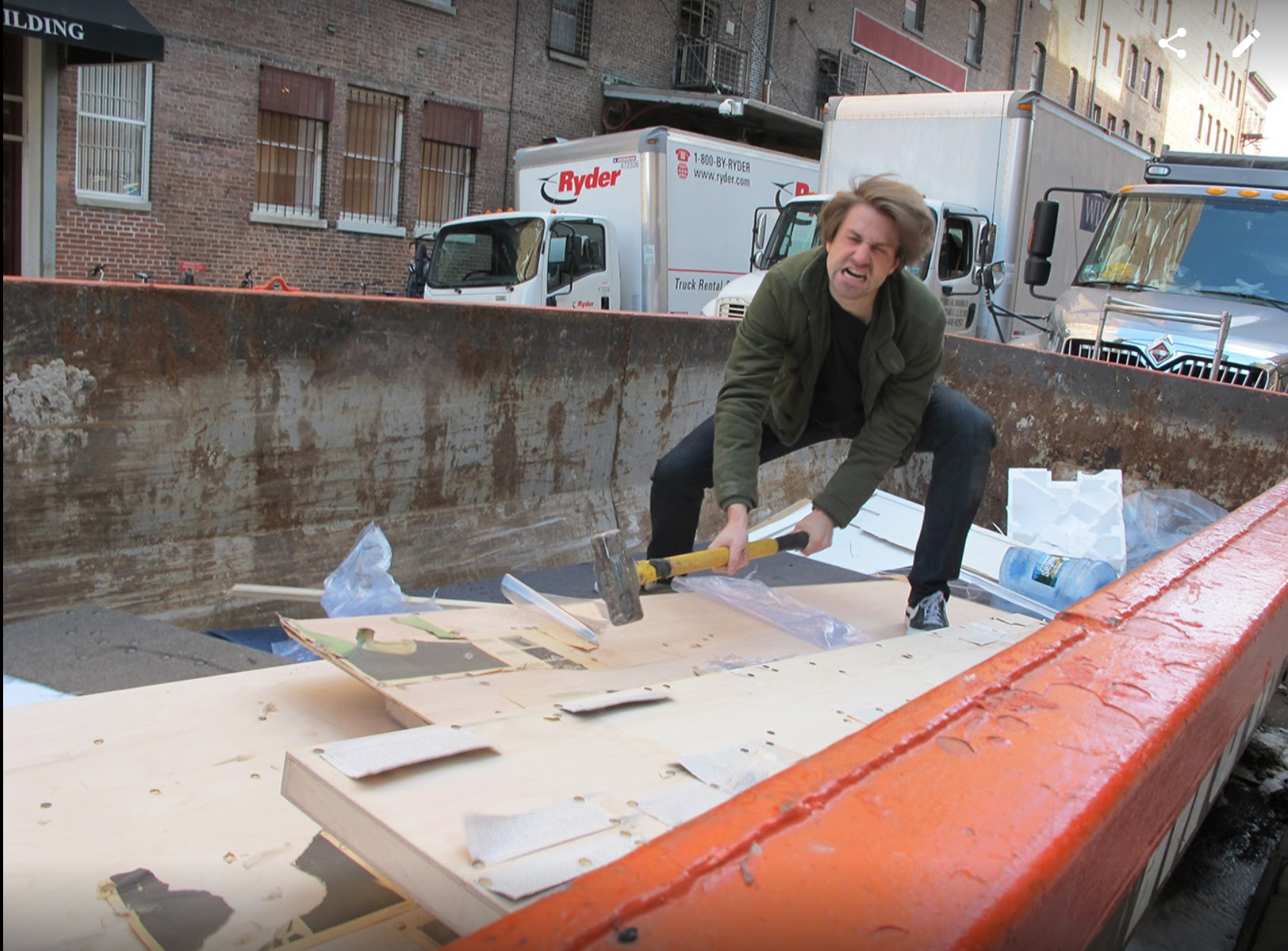
“Mysteries of the ‘Gallery Girl’” is a weekly series exploring the role of the “gallerina” in contemporary commercial galleries.
It is common knowledge at this point—with four years of hindsight—that Chelsea galleries were woefully unprepared for the devastation that 2012’s Hurricane Sandy wreaked upon countless artworks thought to be safely tucked away in storage. And the gallerists weren’t the only ones blindsided. So, too, were my fellow gallery assistants. So was I.
The day after the storm hit, when one gallery assistant trekked 50-some blocks to reach midtown in search of cell service, her phone suddenly began to ping at an alarming rate, revealing frantic messages from her employers. The frenzy culminated in a single closing line: “State of gallery worse than your nightmares.”
Sandy did not discriminate. Upon arriving at the scene post-hurricane, assistants and their colleagues found their galleries in shambles: rows of works stained with watermarks that crept up along the canvases, and the otherwise pristine white walls tainted brown by the Hudson River.
The layers of sandbags placed against the doors, it seemed, had not done their job. Water had rushed in at heights up to five feet (or higher, depending on the proximity to the river)—affecting not only the majority of works in storage but also computer technology, archival materials, and even the structures of the galleries themselves.
Debris and trash lay on the sidewalk of West 24th Street in New York, U.S., in the aftermath of Hurricane Sandy. Photographer: Katya Kazakina/Bloomberg via Getty Images
Needless to say, without electricity, Chelsea’s initial attempts at “cleaning up” with only non-power tools on hand—mops and brooms—were feeble at best, only serving to further irritate the already-stressed and frustrated gallerists.
“I was trudging through the water’s grimy residue—which, you realize, was contaminated by the sewer—with a $200,000 artwork held above my head,” recalls one former gallery assistant. “We’d tip the works against the wall on balled wads of newspaper, hoping they would dry free of any of watermarks, so that clients wouldn’t notice, and they’d still be sellable.”
As the lowest on the totem pole, gallery assistants were typically relegated to trash duty, which is to say they gathered the gallery’s unidentifiable mushy remains as well as works deemed beyond repair —some still in their sopping cardboard encases—while mounting heaping trash piles on the sidewalks.
Paintings by Keith Mayerson dry outside of the Derek Eller gallery in New York. Photographer: Katya Kazakina/Bloomberg via Getty Images.
Other duties included, in a particularly bizarre turn, delicately sponge bathing damaged canvases with mineral water, as neighborhood rumor had it that this method magically cleansed works damaged by Sandy.
“You’d see assistants sitting cross-legged on the sidewalks or cold cement gallery floors with no heating, in full winter jackets, gently massaging artworks with sponges for hours at a time,” said one source.
Things slightly improved once generators entered the picture—but only if you could get your hands on one. Pick-up trucks trolled the Chelsea streets with the device in their beds, their drivers demanding extraordinary prices through car windows.
Refilling these generators with gas naturally became the problem of the lowly gallery assistant. “I spent eight hours on an expedition to New Jersey to get gas for the generator, terrified I’d run out of gas in the car in the meantime,” one former gallery assistant explained, “just to find out my boss had impulsively bought another generator from a truck while I was gone.”